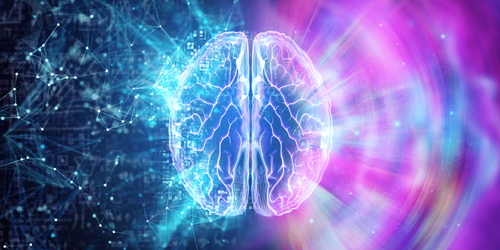Brain Asymmetry Driven by Task Complexity
The neural networks of animal brains are partly mirror symmetric, with asymmetries thought to be more common in more cognitively advanced species. This assumption stems from a long-standing theory that increased complexity of neural tasks can turn mirror-symmetric neural circuits into circuits existing in only one side of the brain. This hypothesis has now received support from a mathematical model developed by Luís Seoane at the National Center for Biotechnology in Spain [1]. The researcher’s findings could help explain how the brain’s architecture is shaped not only by cognitively demanding tasks but also by damage or aging.
A mirror-symmetric neural network is useful when controlling body parts that are themselves mirror symmetric, such as arms and legs. Moreover, the presence of duplicate circuits on each side of the brain can help increase computing accuracy and offer a replacement circuit if one becomes faulty. However, the redundancy created by such duplication can lead to increased energy consumption. This trade-off raises an important question: Does the optimal degree of mirror symmetry depend on the complexity of the cognitive tasks performed by the neural network?
Seoane’s model demonstrates that the ideal configuration of a neural circuit is always either fully mirror symmetric or fully localized to one side of the brain. Crucially, it also shows that increased task complexity can induce a transition between these two configurations. This shift can occur either as the brain develops and ages or as biological evolution proceeds. Seoane says that, although this work focused on mirror symmetry in the brain, the results are general to any set of duplicated neural circuits—such as those present in the same side of the brain.
–Ryan Wilkinson
Ryan Wilkinson is a Corresponding Editor for Physics Magazine based in Durham, UK.
References
- L. F. Seoane, “Optimality pressures toward lateralization of complex brain functions,” Phys. Rev. X 13, 031028 (2023).




